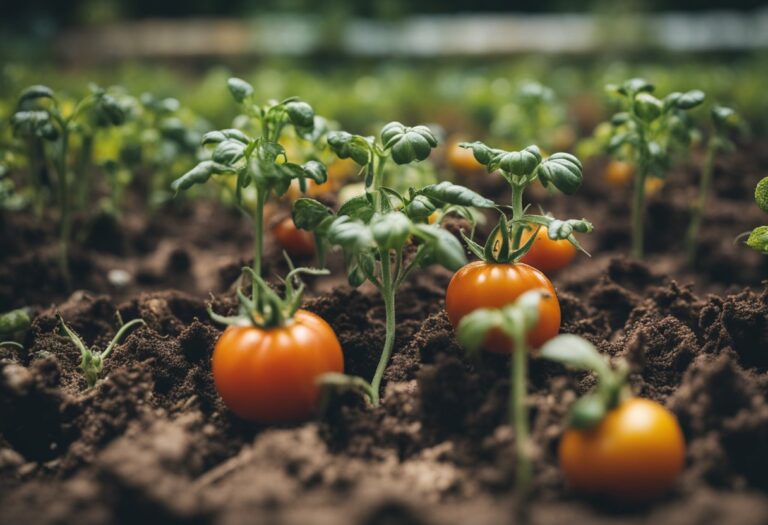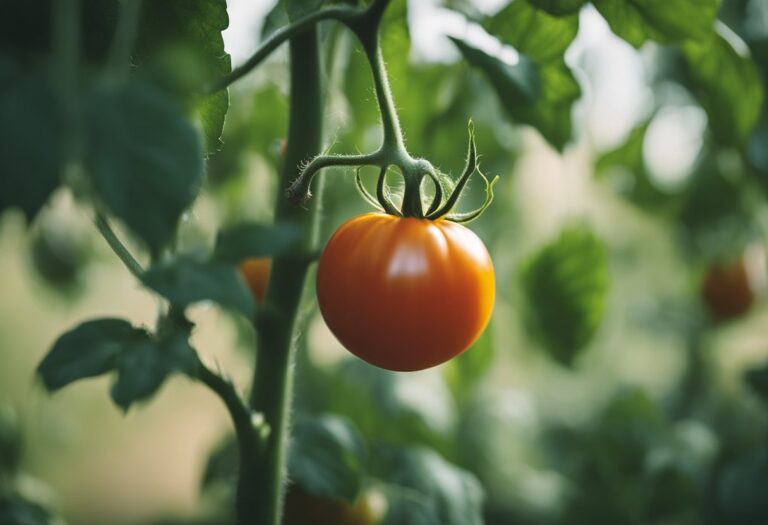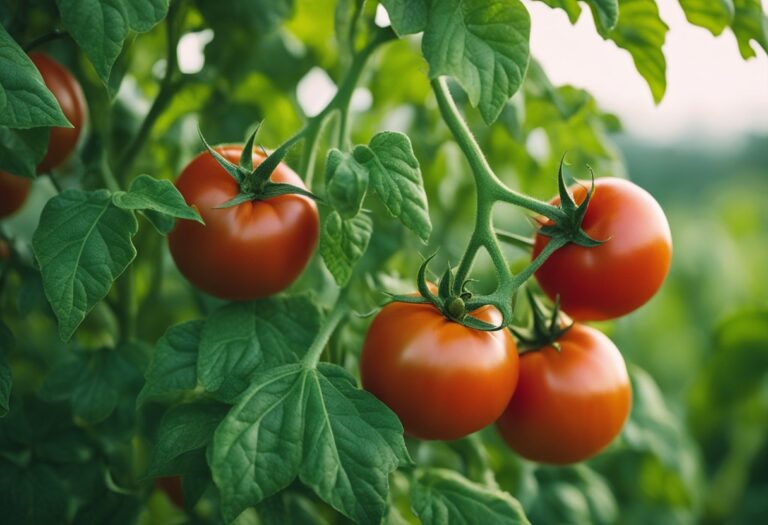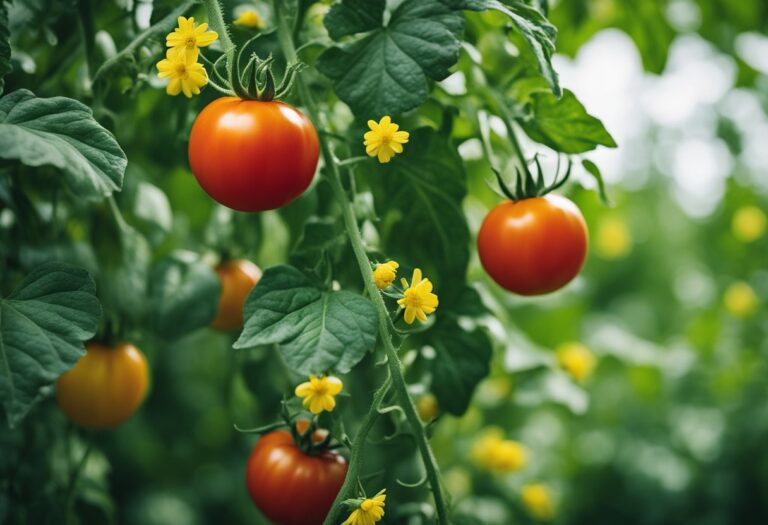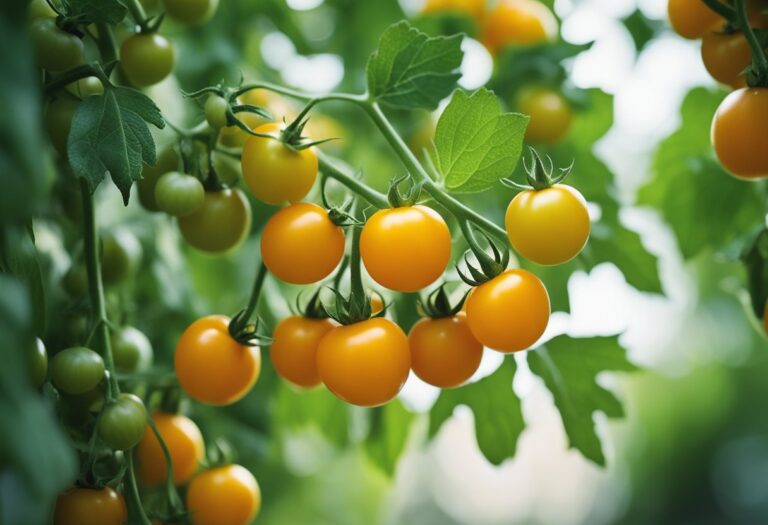Roma Tomatoes: A Guide to Flavorful Cooking
Roma tomatoes are a type of plum tomato that are known for their firm texture and sweet flavor. They are commonly used in cooking, particularly for making sauces and canning, due to their low water content and high levels of natural pectin. They are also a popular choice for gardeners due to their ease of cultivation and resistance to pests and diseases.

One of the main benefits of cultivating Roma tomatoes is their versatility in the kitchen. They can be used in a wide variety of dishes, from classic Italian pasta sauces to homemade salsas and chutneys. Additionally, they are packed with nutrients, including high levels of vitamin C, potassium, and lycopene.
Key Takeaways
- Roma tomatoes are a type of plum tomato known for their firm texture and sweet flavor.
- They are versatile in the kitchen and can be used in a wide variety of dishes.
- They are packed with nutrients, including high levels of vitamin C, potassium, and lycopene.
History of Roma Tomatoes

Roma tomatoes, also known as Italian plum tomatoes, are a popular variety of tomato that originated in the United States in the 1950s [1]. They were developed by the USDA’s Agricultural Research Service scientists in Beltsville, Maryland as a cultivar that was resistant to fusarium wilt [1].
Roma tomatoes were created by crossing three different tomato varieties: ‘San Marzano’, ‘Pan American’, and ‘Red Top’ [2]. Since then, they have become a staple in Italian cuisine and are used in a variety of dishes, including pasta sauces, soups, and salads.
One of the reasons why Roma tomatoes are so popular is because of their thick, meaty flesh and low seed count, which makes them ideal for canning and preserving [1]. They are also high in vitamins A and C, as well as potassium, and are a good source of fiber.
Overall, Roma tomatoes have a rich history and continue to be a beloved ingredient in many kitchens around the world.
[1] Wikipedia
Cultivating Roma Tomatoes

Roma tomatoes are a popular type of tomato that are known for their meaty texture and low seed count. Cultivating Roma tomatoes can be a rewarding experience for gardeners of all skill levels. In this section, we will discuss the soil preparation, planting techniques, watering and fertilization, as well as pest and disease management.
Soil Preparation
Before planting Roma tomatoes, it is important to prepare the soil properly. Roma tomatoes require well-drained loamy soil with a pH level between 6.2 and 6.5. Gardeners should check their soil’s pH and amend it as needed. If the soil is too acidic (lower in pH), adding lime can reduce the acidity. Mixing in some organic matter such as compost or well-aged manure can help boost fertility.
Planting Techniques
Planting Roma tomatoes is easy and straightforward. Gardeners can sow seeds ¼ inch deep in flats filled with moist potting mix. Lightly covering the seeds with potting mix, keeping the flat at 75 to 85 degrees F during the day and 65 degrees F at night in a place with direct sunlight or grow lights.
Once the seedlings have germinated, they can be transplanted to individual pots and grown on in a warm, well-lit place such as a sunny windowsill. Potting on into larger pots once the roots have filled the first pots.
Watering and Fertilization
Roma tomatoes require regular watering to thrive. Gardeners should water their Roma tomato plants at least once a week. The soil should be kept moist but not soggy at all times. Gardeners should also apply a complete fertilizer every 2-4 weeks once fruits are set.
Pest and Disease Management
Roma tomatoes can be susceptible to pests and diseases, such as aphids, whiteflies, and blossom end rot.
Gardeners can prevent these problems by inspecting their plants regularly and removing any damaged or diseased leaves. They can also use insecticidal soap or neem oil to control pests. Blossom end rot can be prevented by ensuring consistent soil moisture and calcium levels.
Nutritional Benefits of Roma Tomatoes
Roma tomatoes are a great source of nutrition and offer a variety of health benefits. They are low in calories, fat-free, and rich in vitamins, minerals, and antioxidants. Here are some of the nutritional benefits of Roma tomatoes:
- Vitamins: Roma tomatoes are an excellent source of vitamins A and C, which are essential for maintaining healthy skin, vision, and immune system. They also contain vitamin K, which helps with blood clotting and bone health.
- Minerals: Roma tomatoes are rich in minerals such as potassium, which helps regulate blood pressure, and manganese, which is important for bone health and metabolism.
- Antioxidants: Roma tomatoes contain lycopene, an antioxidant that may help protect against some types of cancer and improve heart health. They also contain other antioxidants such as beta-carotene, which is converted into vitamin A in the body.
- Low in calories: Roma tomatoes are low in calories, with only 37 calories per cup. This makes them a great addition to a healthy diet and can help with weight management.
Overall, Roma tomatoes are a nutritious and delicious addition to any meal. They can be eaten raw or cooked and are a versatile ingredient in many recipes.
Cooking with Roma Tomatoes
Roma tomatoes are a versatile ingredient that can be used in a variety of dishes. From sauces to salads, these tomatoes are a popular choice for cooking. Here are some tips and ideas for cooking with Roma tomatoes.
Selecting the Perfect Roma Tomato
When selecting Roma tomatoes, look for ones that are firm and free of blemishes or bruises. The skin should be smooth and shiny, and the tomato should feel heavy for its size. Roma tomatoes that are ripe will have a deep red color, but they can also be used when they are slightly underripe and still have a slight green tinge.
Storage and Preservation
To store Roma tomatoes, keep them at room temperature until they are fully ripe, then transfer them to the refrigerator to extend their shelf life. If you have more Roma tomatoes than you can use, consider preserving them by canning or freezing. Canned tomatoes can be used in sauces and soups, while frozen tomatoes can be used in stews and casseroles.
Recipe Ideas
Roma tomatoes are a popular choice for making sauces, such as marinara or tomato sauce. To make a simple tomato sauce, sauté garlic and onions in olive oil until they are soft, then add chopped Roma tomatoes and cook until they break down and release their juices. Season with salt, pepper, and fresh herbs, and serve over pasta or use as a base for pizza.
For a fresh and flavorful salad, combine sliced Roma tomatoes with fresh mozzarella, basil, and balsamic vinegar. Or, try roasting Roma tomatoes with garlic and herbs for a delicious side dish or topping for bruschetta.
Overall, Roma tomatoes are a versatile and delicious ingredient that can be used in a variety of dishes. By selecting the perfect tomatoes, storing and preserving them properly, and trying out some new recipes, you can make the most of this tasty ingredient.
Roma Tomato Varieties
Roma tomatoes are a popular variety of tomato that is widely used for making sauces and pastes. They are known for their firm, meaty flesh and low moisture content, which makes them ideal for cooking. There are several different varieties of Roma tomatoes that are available, each with its own unique characteristics.
One of the most popular varieties of Roma tomatoes is the San Marzano. These tomatoes are known for their sweet, rich flavor and are often used in Italian cuisine. They are also popular for making tomato paste and sauce.
Another popular variety of Roma tomato is the Plum Regal. These tomatoes are known for their deep red color and sweet, juicy flavor. They are often used in salads and sandwiches, as well as for making sauces and pastes.
The Granadero is another variety of Roma tomato that is popular for its sweet, juicy flavor and firm texture. These tomatoes are often used in salads, sandwiches, and as a topping for pizzas.
In addition to these popular varieties, there are also several other types of Roma tomatoes available, each with its own unique flavor and texture. Whether you are looking for a tomato to use in sauces and pastes or one to use in salads and sandwiches, there is a Roma tomato variety that is sure to meet your needs.
Frequently Asked Questions
What is the difference between determinate and indeterminate Roma tomatoes?
Determinate Roma tomatoes are bush-like and grow to a certain height before stopping. Indeterminate Roma tomatoes, on the other hand, grow continuously and require staking or a trellis for support. Both types are suitable for growing in pots or containers.
How much do Roma tomatoes typically cost?
The price of Roma tomatoes can vary depending on the location and season. On average, they cost around $1.50 to $2.50 per pound. However, prices may be higher or lower depending on the availability and demand.
Can you provide tips for growing Roma tomatoes in containers?
When growing Roma tomatoes in containers, it is important to choose a pot that is at least 18 inches deep and wide. Use a well-draining soil mix and fertilize regularly. Water the plants consistently, but avoid overwatering. Prune the plants to encourage growth and remove any diseased or damaged leaves.
What are some popular recipes that include Roma tomatoes?
Roma tomatoes are a popular ingredient in many dishes, particularly in Italian cuisine. They are commonly used in pasta sauces, bruschetta, and salads. They can also be roasted or grilled and used as a topping for pizza.
What is the average weight and size of a Roma tomato?
Roma tomatoes are medium-sized and typically weigh around 2 to 3 ounces each. They are oblong in shape and have a firm texture with a thick skin.
Where do Roma tomatoes originate from and are there any other common names for them?
Roma tomatoes are believed to have originated in Italy, specifically in the region of Rome. They are also known as Italian tomatoes or plum tomatoes.

